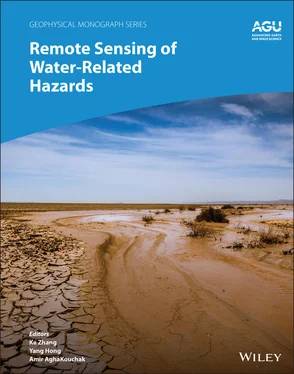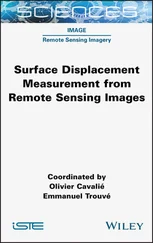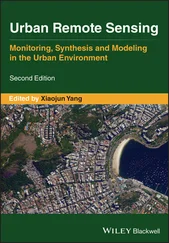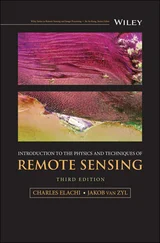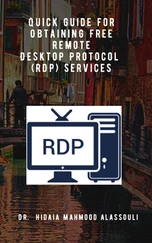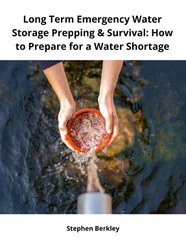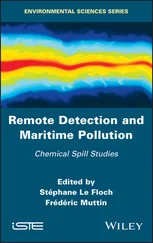Remote Sensing of Water-Related Hazards
Здесь есть возможность читать онлайн «Remote Sensing of Water-Related Hazards» — ознакомительный отрывок электронной книги совершенно бесплатно, а после прочтения отрывка купить полную версию. В некоторых случаях можно слушать аудио, скачать через торрент в формате fb2 и присутствует краткое содержание. Жанр: unrecognised, на английском языке. Описание произведения, (предисловие) а так же отзывы посетителей доступны на портале библиотеки ЛибКат.
- Название:Remote Sensing of Water-Related Hazards
- Автор:
- Жанр:
- Год:неизвестен
- ISBN:нет данных
- Рейтинг книги:5 / 5. Голосов: 1
-
Избранное:Добавить в избранное
- Отзывы:
-
Ваша оценка:
- 100
- 1
- 2
- 3
- 4
- 5
Remote Sensing of Water-Related Hazards: краткое содержание, описание и аннотация
Предлагаем к чтению аннотацию, описание, краткое содержание или предисловие (зависит от того, что написал сам автор книги «Remote Sensing of Water-Related Hazards»). Если вы не нашли необходимую информацию о книге — напишите в комментариях, мы постараемся отыскать её.
Remote Sensing of Water-Related Hazards Remote Sensing of Water-Related Hazards
The American Geophysical Union promotes discovery in Earth and space science for the benefit of humanity. Its publications disseminate scientific knowledge and provide resources for researchers, students, and professionals.
Remote Sensing of Water-Related Hazards — читать онлайн ознакомительный отрывок
Ниже представлен текст книги, разбитый по страницам. Система сохранения места последней прочитанной страницы, позволяет с удобством читать онлайн бесплатно книгу «Remote Sensing of Water-Related Hazards», без необходимости каждый раз заново искать на чём Вы остановились. Поставьте закладку, и сможете в любой момент перейти на страницу, на которой закончили чтение.
Интервал:
Закладка:
Progress in computational modeling and remote sensing technology has transformed the field beyond recognition in just two decades. The wealth of sensors currently in orbit include a capability for large‐scale optical remote sensing, near‐infrared remote sensing, thermal imaging, passive and active microwave sensing, hyperspectral remote sensing, and multitemporal high‐resolution synthetic aperture radar (SAR) sensing, among others. A multitude of algorithms has subsequently emerged to extract information from this data, which can be used for different a range of applications, from ecology to climate science.
Remote sensing of hazards will be increasingly looked upon to reduce our vulnerability and increase our resilience against extreme events. However, understanding the breadth of the available contributions in this area is challenging because scientists from different fields have used satellite observations to address problems in their own disciplines. For this reason, publications on remote sensing of hazards have appeared in disciplinary journals of many fields (such as hydrology, ecology, climatology, geography, agriculture, sensor deign, and social sciences). This can limit the visibility of disciplinary studies within the broader water hazards community.
This monograph bridges the disciplines to provide an overview of the available data, sensors, models, and indicators developed for the monitoring and prediction of various kinds of water hazards. The book reviews recent advances in remote sensing of floods, droughts, rainfall‐triggered landslides, and their associated secondary hazards. The main objective is to offer an up‐to‐date look into water hazards from contributions of scientists with different backgrounds.
This book is organized into 13 chapters, each representing an independent but still interconnected topic related to water hazards. The first chapter describes the background, scope, objective, and organization of this book. Part Iconsiders precipitation and storms, with chapter 2reviewing recent progress in satellite remote sensing of precipitation and chapter 3devoted to the application of ground‐based mobile Doppler radar for monitoring tornadoes and storms contributing to water hazards such as flash floods and floods. Part IIfocuses on flood‐related topics. Chapter 4reviews methods for using satellite remote sensing for flooding mapping and risk assessment, while chapter 5explores the utility of quantitative satellite precipitation estimations for early warning and frequency analysis. Chapter 6describes a new multisource data‐driven web GIS‐based modeling framework for flood forecasting and prevention, while chapter 7introduces a new ensemble‐based remote‐sensing driven flash flood‐landslide early warning system. Finally, chapter 8introduces new methods for detecting hazard‐damaged bridges using multitemporal high‐resolution SAR imagery. Part IIIis dedicated to drought‐related topics starting with chapter 9, which gives an overview of drought monitoring using remote sensing. Next, chapter 10examines vegetation responses to drought disturbances, while chapter 11considers how the Gravity Recovery and Climate Experiment (GRACE) satellites can be used to assess water scarcity. Finally, the use of satellite remote sensing and numerical models is discussed for understanding water cycle variation in chapter 12, and for using ground and satellite sensors for assessing soil salinization in agricultural areas in chapter 13.
Although there are monographs focused on one single water‐related hazard such as flood or drought, we believe there is merit in an overview with a focus on multiple water hazards (here, floods, droughts, rainfall‐triggered landslides, and their associated secondary hazards). We hope that this collection of topics from different areas attracts scientists who work at the interface of multiple water hazards.
Finally, completing this book would not have been possible without the support and assistance of many individuals, including the authors who shared their expertise in this book. We offer special thanks to the reviewers and Jenny Lunn, Director of Publications at AGU, for their constructive and thoughtful comments, which led to substantial improvements in the quality of the book. This book was partially supported by the National Key Research and Development Program of China (2018YFC1508101), the National Natural Science Foundation of China (51879067), the Natural Science Foundation of Jiangsu Province (BK20180022), the Six Talent Peaks Project in Jiangsu Province (NY‐004), the NOAA/Office of Oceanic and Atmospheric Research under NOAA–University of Oklahoma Cooperative Agreement (NA14OAR483), and the NASA Surface and Interior program (NNH10ZDA001NESI). We also thank AGU and Wiley for supporting the preparation and production of this book.
Ke Zhang Hohai University, China
Yang Hong University of Oklahoma, USA
Amir AghaKouchak University of California, Irvine, USA
1 Interdisciplinary Perspectives on Remote Sensing for Monitoring and Predicting Water‐Related Hazards
Ke Zhang1, Yang Hong2,3, and Amir AghaKouchak4
1 State Key Laboratory of Hydrology‐Water Resources and Hydraulic Engineering, and Yangtze Institute for Conservation and Development, and College of Hydrology and Water Resources, and CMA‐HHU Joint Laboratory for HydroMeteorological Studies, Hohai University, Nanjing, China
2 School of Civil Engineering and Environmental Sciences, University of Oklahoma, Norman, Oklahoma, USA
3 Advanced Radar Research Center, and Center for Spatial Analysis, National Weather Center, Norman, Oklahoma, USA
4 Department of Civil and Environmental Engineering, University of California, Irvine, California, USA
ABSTRACT
Water‐related hazards, including floods, droughts, rainfall‐triggered landslides, water‐scarcity‐induced soil salinization, and other interconnected hazards related to water, have caused considerable loss of human life and damage to property and infrastructure throughout human history. As significant progress has been achieved in satellite technology in recent decades, remote sensing of water‐related hazards has emerged as an effective tool for better monitoring of hazards and reducing our vulnerability to extreme events. This chapter presents an overview of this book, which reviews recent advances and presents new studies in remote sensing of floods, droughts, rainfall‐triggered landslides, and their associated cascading hazards. The main objective is to offer an up‐to‐date perspective on remote sensing of water‐related hazards across disciplines by presenting the work of scientists from different backgrounds.
1.1. BACKGROUND
Water‐related hazards broadly include floods, droughts, rainfall‐triggered landslides, water‐scarcity‐induced soil salinization, and many other interconnected hazards related to water. Floods and droughts, as the core types of water‐related hazards, have caused numerous losses of human lives and properties throughout human history (Du et al., 2018; Paprotny et al., 2018). With rapid socioeconomic development, population and industrial growth, and other anthropogenic activities over recent decades, many new water‐related challenges have emerged and imposed increasing threats on the built and natural environment (Lehnert et al., 2017; Wear et al., 2021; Zhang et al., 2021). Moreover, climate change and variability have altered regional to global water cycles (Huntington, 2010; Zhang et al., 2018; Y. Q. Zhang et al., 2016), causing an overall increase in the frequency and intensity of drought and floods around the world (AghaKouchak et al., 2015; Gu et al., 2020). Importantly, climate change is projected to increase the frequency and intensity of drought and floods in the mid‐ to late 21st century (IPCC, 2013; Wu et al., 2020), and to combine with other anthropogenic activities (AghaKouchak et al., 2021; Zhang et al., 2015; Y. Q. Zhang et al., 2016), leading to a rising risk to humans (Kam et al., 2021; Roudier et al., 2016). The growing impacts of water hazards have spurred research into improving monitoring and prediction of water hazards (Khaing et al., 2019; Makinano‐Santillan et al., 2019), understanding the underlying drivers (Gui et al., 2020), implementing various mitigation and adaptation strategies (Xu et al., 2020), and identifying other relevant factors such as climate change, population growth, exposure, and socioeconomic development.
Читать дальшеИнтервал:
Закладка:
Похожие книги на «Remote Sensing of Water-Related Hazards»
Представляем Вашему вниманию похожие книги на «Remote Sensing of Water-Related Hazards» списком для выбора. Мы отобрали схожую по названию и смыслу литературу в надежде предоставить читателям больше вариантов отыскать новые, интересные, ещё непрочитанные произведения.
Обсуждение, отзывы о книге «Remote Sensing of Water-Related Hazards» и просто собственные мнения читателей. Оставьте ваши комментарии, напишите, что Вы думаете о произведении, его смысле или главных героях. Укажите что конкретно понравилось, а что нет, и почему Вы так считаете.
